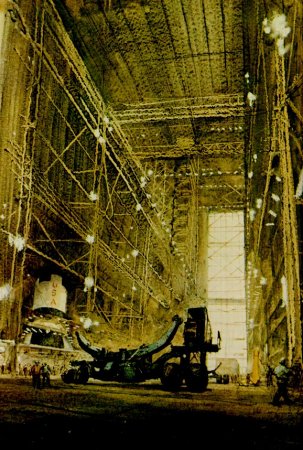
THE GOAL OF APOLLO
The Apollo requirement was to take off from a point on the surface of the Earth that was traveling 1000 miles per hour as the Earth rotated, to go into orbit at 18,000 miles an hour, to speed up at the proper time to 25,000 miles an hour, to travel to a body in space 240,000 miles distant which was itself traveling 2000 miles per hour relative to the Earth, to go into orbit around this body, and to drop a specialized landing vehicle to its surface. There men were to make observations and measurements, collect specimens, leave instruments that would send back data on what was found, and then repeat much of the outward-bound process to get back home. One such expedition would not do the job. NASA had to develop a reliable system capable of doing this time after time.

|
| John W. McCoy II, FIRST LIGHT, watercolor on paper |
At the time the decision was made, how to do most of this was not known. But there were people in NASA, in the Department of Defense, in American universities, and in American industry who had the basic scientific knowledge and technical know-how needed to predict realistically that it could be done.

|
Paul Calle, TESTING THE SPACESUIT, pen and ink on paper |
